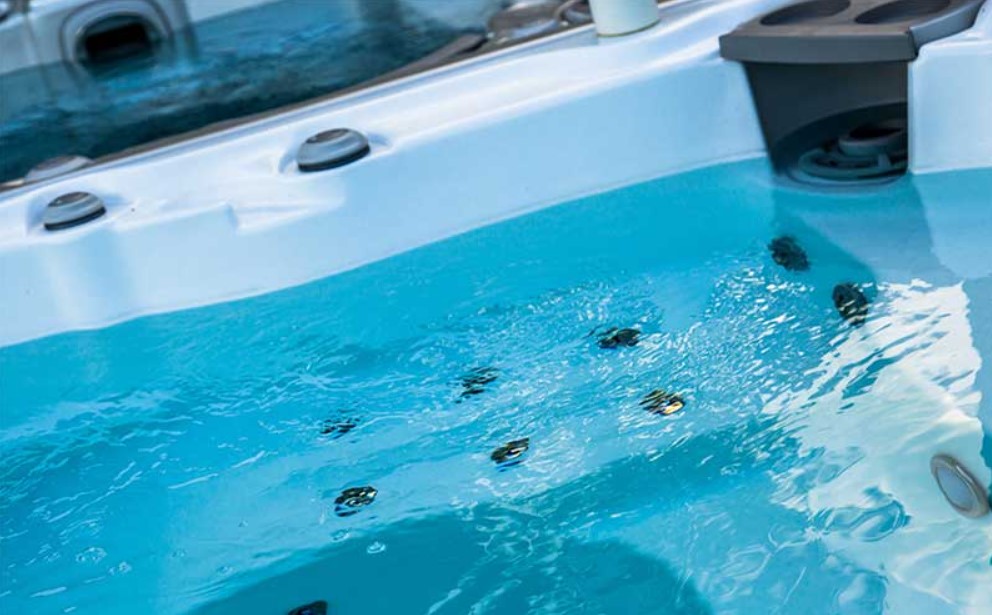WHICH SANITIZER IS IDEAL FOR YOUR HOT TUB WATER?

Hot tubs, whether indoor or outdoor, require routine sanitation. Some hot tubs could respond better to chlorine than others to bromine. But how do you choose the best hot tub water sanitizer for you?
While bromine is more frequently used to sanitize hot tubs, chlorine is still the most used sanitizer for swimming pools. Learn about each sanitizer’s characteristics, advantages, and disadvantages before deciding which one to use for your hot tub water care.
Chlorine VS bromine
Chlorine
Chlorine oxidizes pollutants, encroaching upon them and obliterating them from the inside out. As it works, chlorine evaporates and transforms into a byproduct known as chloramines. These leftovers give chlorine its reputation for stinging, drying, and stinking and lessen the sanitizer’s efficacy.
You’ll need to add chlorine frequently, typically once a week, to keep chloramines at bay. However, if the situation worsens and the chlorine cannot remove the chloramines on its own, you can shock your hot tub. You should do that frequently to maintain your water clear and pristine.
Bromine
Bromine is an ionizer that breaks the chemical bonds of pollutants. Even after interacting with contaminants, a sizable portion of it continues to be functional. However, bromine also creates a byproduct known as bromamines. They lessen the potency of the bromine in your hot tub despite not being as harmful as chloramines.
Efficacy
The reactivity rate of a sanitizer is a gauge of its efficacy. This refers to how quickly it eliminates pollutants.
- Chlorine kills pollutants more quickly than bromine. Although less reactive than chlorine, bromine is a fairly reactive element that kills more slowly.
- Bromine can assist in maintaining your water’s general chemistry more balanced because it has a lower pH than chlorine, which means you won’t have to do as much altering and fiddling.
Stability
Although bromine is more stable than chlorine, especially in warm water, chlorine may work faster quickly.
- Chlorine: Requires more frequent replacement because it dissipates more quickly than bromine.
- Compared to chlorine, bromine kills microorganisms in your spa for extended periods.
UV radiation is an exception to this rule since it can degrade bromine more quickly than chlorine. If you have an outdoor hot tub, this is something to be concerned about, which makes using your hot tub cover even more crucial.
The likelihood of bacteria and algae growing in your hot tub increases with the amount of chloramines present.
Dosage rates
You should use enough sanitizer to match the volume of water your hot tub can contain, which is inversely proportional to the size of the tub, to achieve the best results. The first step is to adhere to the manufacturer’s recommendations. You’ll then need to test the water to determine the levels and whether you’ve used enough.
- Chlorine: The optimal chlorine concentration is between 1 and 3 parts per million (ppm), with 3 ppm being the ideal range.
- Bromine: A range of 3 ppm to 5 ppm is ideal, with 5 ppm being the ideal amount.
The ultimate hot tub water care
Remember that you occasionally need to drain and clean your hot tub, ideally once every three months, regardless of how well you keep sanitizer levels.
